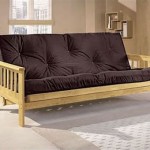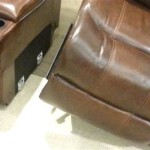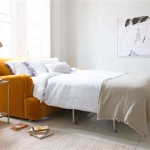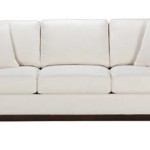The Enduring Appeal of the Wooden Sofa Table
The wooden sofa table, a versatile and often overlooked piece of furniture, has proven its staying power in home décor. Functioning as both a practical surface and an aesthetic accent, the sofa table offers solutions for storage, display, and accessibility within the living room or similar seating areas. Its elongated form typically fits snugly behind a sofa, against a wall, or even as a room divider, making it adaptable to various spatial arrangements and design schemes. Examining the construction, functionality, and design possibilities of the wooden sofa table reveals its continued relevance in contemporary interiors.
The primary function of a sofa table is to provide a convenient surface within easy reach of those seated. This makes it ideal for holding lamps, books, beverages, remote controls, or decorative items. Beyond immediate convenience, the table can also serve as a storage solution. Many models feature drawers, shelves, or a combination of both, offering a place to stash magazines, blankets, or other items that might otherwise clutter the living space. The presence of a sofa table contributes to a more organized and visually appealing environment.
The enduring popularity of the wooden sofa table lies, in part, in the inherent warmth and natural beauty of wood. The material itself contributes to a feeling of comfort and sophistication. Wood also provides a broad range of options in terms of color, grain, and finish, allowing for seamless integration with existing décor or the creation of a striking focal point. From traditional to contemporary styles, wood lends itself well to diverse design aesthetics, ensuring that there is a wooden sofa table to suit almost any taste.
Functionality and Placement
The functionality of a wooden sofa table extends beyond its surface area. The height of the table is crucial to its usability. Ideally, it should be approximately equal to or slightly lower than the height of the sofa's back. This ensures that items placed on the table are easily accessible without requiring excessive reaching. When positioned behind a sofa, the table effectively creates a buffer zone, preventing the sofa from directly touching the wall and protecting both the furniture and the wall surface. The table also provides an opportunity to incorporate electrical outlets for lamps or charging devices, eliminating the need for unsightly extension cords.
Alternative placement options can further enhance the utility of a wooden sofa table. In smaller living spaces, it can serve as a console table against a wall, providing a surface for displaying artwork or decorative objects. A sofa table can also be used as a room divider, particularly in open-plan layouts. By placing a sofa table perpendicular to a sofa, it helps to define separate zones within the larger space, creating a more intimate and functional arrangement. When used in hallways or entryways, the wooden sofa table offers a welcoming focal point for keys, mail, or other essential items.
The weight capacity of the sofa table is another factor to consider. Depending on the intended use, the table needs to be sturdy enough to support the weight of lamps, books, or other items without wobbling or collapsing. Reinforced construction techniques and the selection of durable wood species contribute to the overall stability and longevity of the table. Furthermore, the design of the table should complement the style of the sofa and the surrounding furniture. A mismatched table can detract from the overall aesthetic, while a well-chosen table can enhance the visual appeal of the entire room.
Design Aesthetics and Styles
The design of a wooden sofa table is a reflection of the owner's personal style and the overall aesthetic of the living space. Wooden sofa tables are available in a wide range of styles, from traditional to contemporary, rustic to modern. Traditional styles often feature ornate carvings, intricate details, and rich finishes. These tables evoke a sense of elegance and sophistication, complementing classic furniture and décor. Contemporary styles, on the other hand, tend to be more minimalist, with clean lines, simple shapes, and a focus on functionality. These tables are well-suited to modern interiors and spaces with a more streamlined aesthetic.
Rustic sofa tables embrace the natural imperfections of wood, showcasing knots, grain patterns, and a weathered appearance. These tables often feature reclaimed wood or distressed finishes, creating a warm and inviting atmosphere. They are perfect for creating a cozy and comfortable living space, particularly in homes with a farmhouse or cottage-style décor. Modern sofa tables can incorporate elements such as metal accents, glass tops, or geometric designs, adding a touch of industrial chic or contemporary flair. These tables often feature bold colors or contrasting materials, making them a focal point in the room.
The choice of wood species also plays a significant role in the overall design of the sofa table. Hardwoods like oak, maple, and walnut are known for their durability and attractive grain patterns. Softwoods like pine and cedar are more affordable and often used in rustic or casual designs. The finish applied to the wood can further enhance its beauty and protect it from damage. Common finishes include stains, paints, varnishes, and lacquers. The color and sheen of the finish can dramatically alter the appearance of the table, making it crucial to select a finish that complements the surrounding décor.
Construction and Materials
The quality of a wooden sofa table is determined by the materials used in its construction and the craftsmanship involved in its assembly. Solid wood construction is generally considered to be the most durable and long-lasting option. Solid wood tables are made entirely from solid pieces of wood, rather than veneers or particleboard. This makes them more resistant to damage and allows them to be refinished or repaired if necessary. However, solid wood tables can also be more expensive.
Veneered sofa tables are made from a thin layer of wood veneer applied to a substrate such as plywood or particleboard. Veneer construction can offer a more affordable alternative to solid wood, while still providing the look and feel of real wood. However, veneered tables are more susceptible to damage and may not be as durable as solid wood tables. Particleboard and MDF (medium-density fiberboard) are composite materials that are often used in the construction of less expensive furniture. These materials are less durable than solid wood or veneer and can be prone to swelling or warping if exposed to moisture.
The joinery techniques used in the construction of the sofa table also contribute to its overall strength and stability. Common joinery methods include dovetail joints, mortise and tenon joints, and screw and glue construction. Dovetail joints are known for their strength and durability, while mortise and tenon joints provide a secure and stable connection between two pieces of wood. Screw and glue construction is a more common and affordable method of joinery, but it may not be as strong or durable as other techniques. The hardware used in the construction of the table, such as hinges, drawer pulls, and knobs, should also be of high quality to ensure smooth operation and long-lasting performance. Proper construction and carefully selected materials are essential for ensuring that a wooden sofa table is not only aesthetically pleasing but also functional and durable.

Knotty Alder Sofa Table Diy Furniture

30 Diy Sofa Console Table Tutorial Jenna Sue Design

Sofa Table Reclaimed Wood Sons Of Sawdust

100 Coffee Table Design Inspiration The Architects Diary Sofa Modern

Square Brown Wooden Modular Sofa Table For Home

Sheesham Solid Wood 5 Seater Sofa Set Without Centre Table For Living Room Wooden Furniture 3 1 Woodcraftcentre

Sofa Tables Buy Table In At Low

Buy Wooden Sofa Side Table Chair Arm Rest Rustic Stylish In

Sineca Simple Natural Wood Grain Sofa Table Dark Cherry Mibasics Target

Sofa Table Buy At Low S In Flipkart Com
Related Posts








